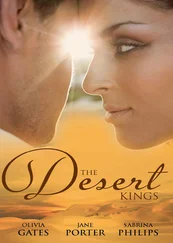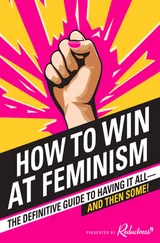Descartes’ diet ostensibly had nothing to do with ethical objections to killing animals. Indeed, his Discourse on the Method directed a specific attack against the cult of loving animals inaugurated by Michel de Montaigne’s Apology for Raymond Sebond (1585). Descartes’ dualist theory of the beast-machine seems to have been devised partly in order to extinguish these feelings of compassion. This is borne out by Descartes’ early manuscripts which show that he first devised the idea of the animal automata in 1619–20 after his friend and superior brother at the Jesuit college, Father Molitor, presented him with the animal-friendly Treatise on Wisdom (1601) by Montaigne’s disciple Pierre Charron. 17
Following Descartes’ lead, Malebranche also attacked the ‘dangerous’ Montaigne for being ‘angry with Men; because they separate themselves from … Beasts , which he calls our Fellow Brethren , and our Companions ’. 18 Malebranche explained that sympathy was just a mechanical process in the body – like blood circulation, an animal function as bestial as a sexual urge – and should therefore be subjugated like other carnal appetites to the superior power of reason: and reason indicated that animals were not really feeling pain in any case. 19 This lesson was lost on ‘Persons of a fine and delicate Constitution, who have a lively Imagination, and very soft tender Flesh’, especially women and children who, he said, ‘are Mechanically dispos’d to be very Pitiful and Compassionate’. 20 But Malebranche recognised that even being as convinced as he and Descartes were that animals did not feel pain was no protection against this corporal feeling of sympathy. For this inescapable automatic compassion, he said, ‘often prevents those Persons from Butchering Beasts, who are the most convincingly perswaded they are meer Machines’. He warned that failing to realise that the body was sending misleading signals was ‘a prejudice that is very dangerous in view of its consequences’. 21
Though tantalisingly unverifiable, it would be most surprising if Descartes’ medical decision to abstain from meat also made him feel better because it avoided the irrepressible sensation of sympathy for animal suffering. But by the end of the eighteenth century at least, that is precisely what some commentators believed was the case. One author even implied that it was because of his humanity that, ‘in imitation of the good natured Plutarch, [Descartes] always preferred fruits and vegetables to the bleeding flesh of animals.’ 22
Regardless of Descartes’ own feelings, it is superlatively ironic that this Cartesian mechanistic explanation of sympathy was turned into an argument for ethical vegetarianism in the eighteenth century. The fact that sympathy was an innate function of human anatomy convinced many that it was an embodiment of natural or divine law – especially since most people believed God had personally designed the human body. This came to underwrite the argument that sympathy was an innate source of moral and social principles, formulated by the ‘moral sense’ philosophers from the 3rd Earl of Shaftesbury (1671–1713) to Francis Hutcheson (1694–1746) and David Hume (1711–76), until it was finally revised by Immanuel Kant (1724– 1804). 23 It became common to extrapolate the same argument onto sympathy for animals and for Jean-Jacques Rousseau this constituted a basis for animal rights. As the Dutch physician-philosopher Bernard Mandeville (1670–1733) expressed it in 1714, because sympathy ‘proceeds from a real Passion inherent in our Nature, it is sufficient to demonstrate that we are born with a Repugnancy to the killing, and consequently the eating of Animals’. 24 At a time when natural observations carried as much force as biblical strictures, this deduction of natural law became one of the most potent arguments for vegetarianism. Anti-vegetarians fiercely responded by adopting the neo-Cartesian argument that sympathy should be subjugated to reason and to the scriptural permission to kill animals.
Even if Descartes was not one of those described by Malebranche, who knew animals were machines but still could not bring themselves to kill them, his extraordinary legacy influenced both sides of the medical and ethical vegetarian debate which flourished throughout the eighteenth century.
ELEVEN Tooth and Nail: Pierre Gassendi and the Human Appendix
In 1699 the anatomy lecturer at Surgeon’s Hall in London, Edward Tyson, made a breakthrough in the understanding of humanity’s relationship to beasts. For the first time in Western science, Tyson dissected the body of an ape, and to the fascination of all found that in nearly every way it resembled a human. He called it the ‘Orang-Outang’ – Malayan for ‘Man of the Woods’ – or in Latin, Homo sylvestris , and his specimen still stands in the upright posture of a human in the British Museum. The ‘Orang-Outang’ was in fact a young chimpanzee, but Tyson’s observations were nevertheless sensational and were still being consulted 150 years later when Charles Darwin (1809–82) devised his theory on the ‘missing link’.
Tyson’s chimp shed new light on the perennial question about the distinction between humans and animals: this ‘pygmie’, said Tyson, was ‘no man, nor yet a common ape but a sort of animal between both’. As far as he could see there was no difference between the two, even ‘the Brain in all Respects, exactly resembling a Man’s’. Contrary to expectations, Tyson believed this disproved the ancient atheist idea that man was just a sophisticated ape. In accordance with Descartes’ philosophy, Tyson argued that if there was no physical difference and yet animals still couldn’t speak or reason, man’s pre-eminence must reside in the ‘Higher principle’ of a rational soul. However, in the longer term, Tyson’s observations did lend force to the argument that humans were not essentially different from animals.
Tyson’s dissection has gone down as a landmark in the history of human self-knowledge, but its immediate impact is less well known. If the ape was corporally identical to humans, Tyson’s contemporaries began to wonder, mightn’t its habits tell us something about human nature? As one anxious reader (perhaps John Evelyn) scribbled in the margin of Tyson’s book Orang-Outang , King Charles I had to put down his court ape for being disturbingly lecherous.
Edward Tyson’s chimpanzee, before and after dissection (1699)
What about other natural appetites? Before he cut the poor chimp open, Tyson had been charmed by its virtuous temperance: it had got extremely drunk the first time someone gave it a jug of wine, but subsequently it restricted itself to just one glass with every meal, which proved, said Tyson, that the ‘ Instinct of Nature teaches Brutes Temperance ; and Intemperance is a Crime not only against the Laws of Morality , but of Nature too.’ The chimp also seemed to show that St Paul’s commandment against food taboos was a natural law, for it ate anything that was set before it, which – in the absence of any information on its natural feeding habits – led Tyson to suggest tentatively that ‘I can’t but think, (like a Man) that they are omnivorous. ’
It is true that chimps do occasionally prey on monkeys but the ape we now call the orang-utan is exclusively herbivorous. Tyson and his contemporaries were confused about the difference between the great apes which made it difficult to collate behavioural observations with anatomical studies made back home. Travel books that Tyson quoted described other apes which ‘feed upon Fruits that they find in the Woods, and upon Nuts; for they eat no kind of Flesh’. If it was true that the apes were herbivorous and if their bodies were identical to man’s, wouldn’t that imply that humans were naturally designed to be herbivorous too? This set the stage for one of the most enduring and heated debates of the century: if man was an animal, what sort of an animal was he: carnivore or herbivore? What implications did this have for human nature: vicious or benign? 1
Читать дальше












